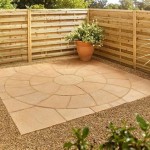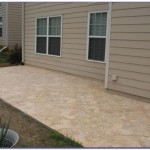How To Build a Simple Wooden Patio Deck
Constructing a simple wooden patio deck can significantly enhance an outdoor living space, providing a dedicated area for relaxation, entertaining, and enjoying the weather. This article provides a comprehensive guide to building a basic wooden deck, suitable for beginners with basic carpentry skills. The process involves careful planning, precise measurements, and adherence to local building codes.
Before commencing any construction, it is imperative to check local building regulations and obtain any necessary permits. This ensures the deck complies with safety standards and zoning laws. Failure to do so can result in fines or require the deck to be dismantled. The local building department can provide information on specific requirements for deck construction, including size limitations, railing specifications, and foundation depth.
Accurate planning is crucial for a successful deck building project. A detailed plan outlines the dimensions of the deck, the placement of support posts, the spacing of joists, and the layout of the decking boards. This plan serves as a roadmap throughout the construction process, minimizing errors and ensuring a structurally sound and aesthetically pleasing finished product.
Key Point 1: Planning and Preparation
The initial stage involves meticulous planning and thorough preparation. This includes determining the deck's size and shape, selecting the appropriate lumber, and gathering all necessary tools and materials. Accuracy in this phase is paramount to the overall success of the project.
The size of the deck should be determined based on the available space and the intended use. Consider the number of people who will typically use the deck and the furniture that will be placed on it. A larger deck will require more materials and labor, but it will also provide more usable space. A smaller deck may be sufficient for a small family or a single person.
Selecting the right lumber is critical to the longevity and appearance of the deck. Pressure-treated lumber is recommended for all structural components, as it is resistant to rot and insect damage. Decking boards can be made from a variety of materials, including treated lumber, cedar, redwood, or composite decking. Consider the aesthetic appeal, durability, and cost of each material when making a selection.
A comprehensive list of tools is essential for efficient and accurate construction. The following tools are typically required: measuring tape, level, circular saw, drill, impact driver, hammer, post-hole digger, shovel, and safety glasses. Having the right tools on hand will save time and frustration throughout the project.
Material quantities must be calculated accurately to avoid running short or over-purchasing. A materials list should include the amount of lumber needed for the frame, posts, joists, and decking. It should also include the quantity of screws, nails, concrete, and any other necessary fasteners. A materials list will make the purchasing process easier and more efficient.
Once the materials and plans are set, it becomes necessary to prepare the ground. This means clearing any vegetation, debris, or topsoil from the area where the deck will be built. Leveling the ground is essential for a stable and even deck foundation. A level surface also prevents water from pooling under the deck, which can lead to rot and other problems.
Key Point 2: Constructing the Deck Frame
The foundation of the deck is the frame, which consists of posts, beams, and joists. These components work together to support the weight of the decking and any occupants. Proper construction of the frame is essential for the stability and safety of the deck.
The first step is to set the posts. The posts provide the vertical support for the deck. Dig holes for the posts, ensuring they are deep enough to extend below the frost line in the area. The depth of the frost line varies depending on the climate. Pour concrete into the holes to anchor the posts securely. Use a level to ensure the posts are plumb before the concrete sets.
Once the posts are set, the beams can be attached. Beams are horizontal supports that run between the posts. They provide the main structural support for the deck. Attach the beams to the posts using lag screws or bolts. Ensure the beams are level and securely fastened to the posts.
The joists are horizontal supports that span between the beams. They provide the support for the decking boards. Space the joists according to the manufacturer's recommendations for the decking material being used. Attach the joists to the beams using joist hangers. Ensure the joists are level and securely fastened to the beams.
Proper spacing of the posts, beams, and joists is crucial for structural integrity. The spacing will depend on the size and design of the deck, as well as the type of lumber used. Consult local building codes or a qualified professional for guidance on proper spacing.
Consider adding blocking between the joists for additional stability. Blocking consists of short pieces of lumber that are installed perpendicularly between the joists. Blocking helps to prevent the joists from twisting or bending, which can improve the overall stability of the deck.
Key Point 3: Installing the Decking and Finishing Touches
With the frame in place, the next step is installing the decking boards. This involves attaching the decking boards to the joists, creating the surface of the deck. The final touches involve adding railings, stairs, and any other desired features.
When installing decking boards, start by laying the first board along the outer edge of the deck. Use spacers to maintain consistent gaps between the boards. These gaps allow for expansion and contraction of the wood due to changes in temperature and humidity. Secure the boards to the joists using screws or nails. Choose fasteners that are designed for outdoor use and that are compatible with the decking material.
Stagger the joints between decking boards for a more visually appealing and structurally sound deck. This means that the end of one board should not line up with the end of another board on the same joist. Staggering the joints distributes the load more evenly across the joists.
Consider adding a border around the perimeter of the deck. A border can add a touch of style and can also help to protect the edges of the decking boards. The border can be made from the same material as the decking, or from a contrasting material.
Depending on the height of the deck, railings may be required by local building codes. Railings provide a safety barrier and prevent people from falling off the deck. Install railings according to code requirements, ensuring they are strong and secure. Common railing materials include wood, metal, and composite.
If the deck is elevated significantly above the ground, stairs will be necessary. Build stairs with solid stringers and secure treads. The rise and run of the stairs should comply with local building codes. Handrails are typically required for stairs, providing additional safety and support.
After construction is complete, inspect the deck for any loose fasteners or other potential hazards. Make any necessary repairs to ensure the deck is safe and sound. Apply a sealant or stain to the decking boards to protect them from the elements and to enhance their appearance.
Regular maintenance is essential for preserving the life of the deck. This includes cleaning the deck regularly to remove dirt, leaves, and other debris. Inspect the deck annually for signs of rot, insect damage, or loose fasteners. Make any necessary repairs promptly to prevent further damage. Applying a sealant or stain every few years will help to protect the wood from the elements.
Building a simple wooden patio deck is a rewarding project that can enhance an outdoor living space. With careful planning, precise measurements, and adherence to local building codes, a durable and aesthetically pleasing deck can be constructed. Proper maintenance will ensure the deck provides years of enjoyment.

How To Build A Small Freestanding Deck So Much Better With Age

How To Build A Simple Diy Deck On Budget The Home Depot

How To Build A Simple Diy Deck On Budget The Home Depot

How To Build A Simple Diy Deck On Budget The Home Depot

Simple Deck Design Ideas To Improve Your Outdoor Space Gnh

How To Build A Simple Diy Deck On Budget The Home Depot

How To Plan A Deck Tips For Design Layout Timbertech

Design And Build A Deck

How To Build A Wooden Patio Deck Blog George Hill Timber

Easiest Deck You Ll Ever Build Anyone Can Do This
Related Posts








